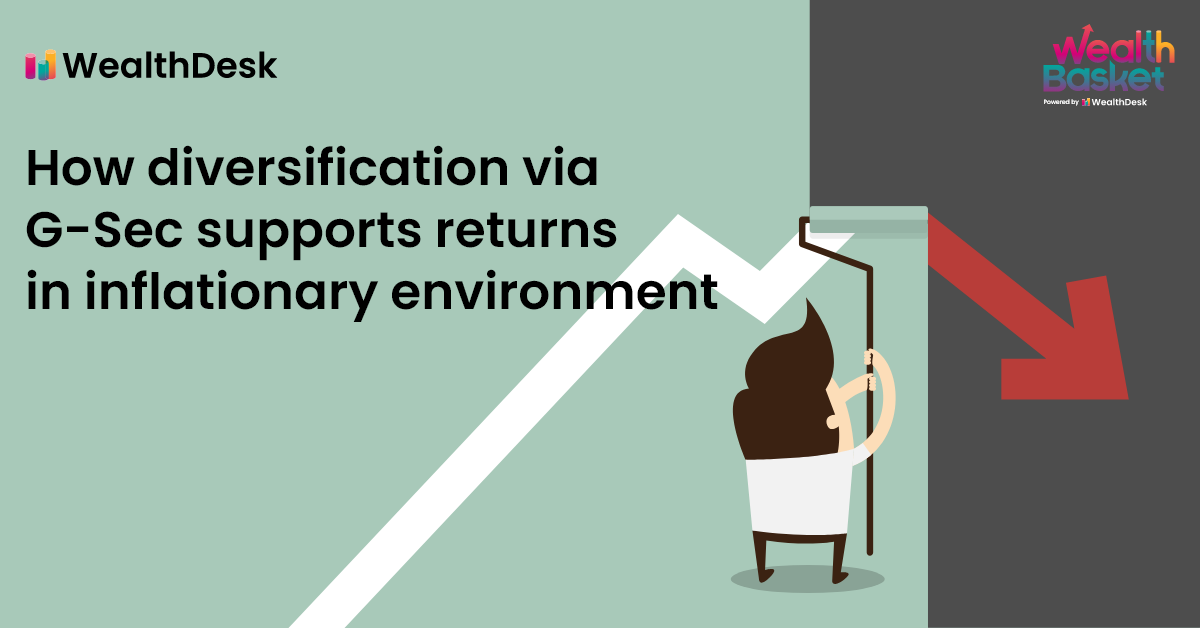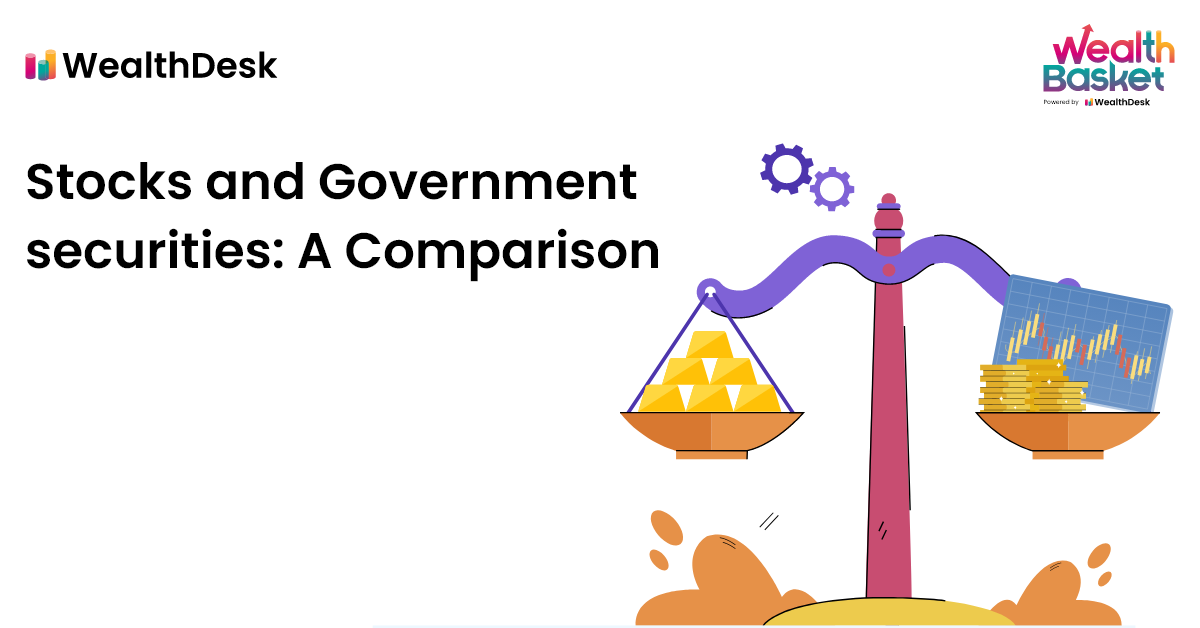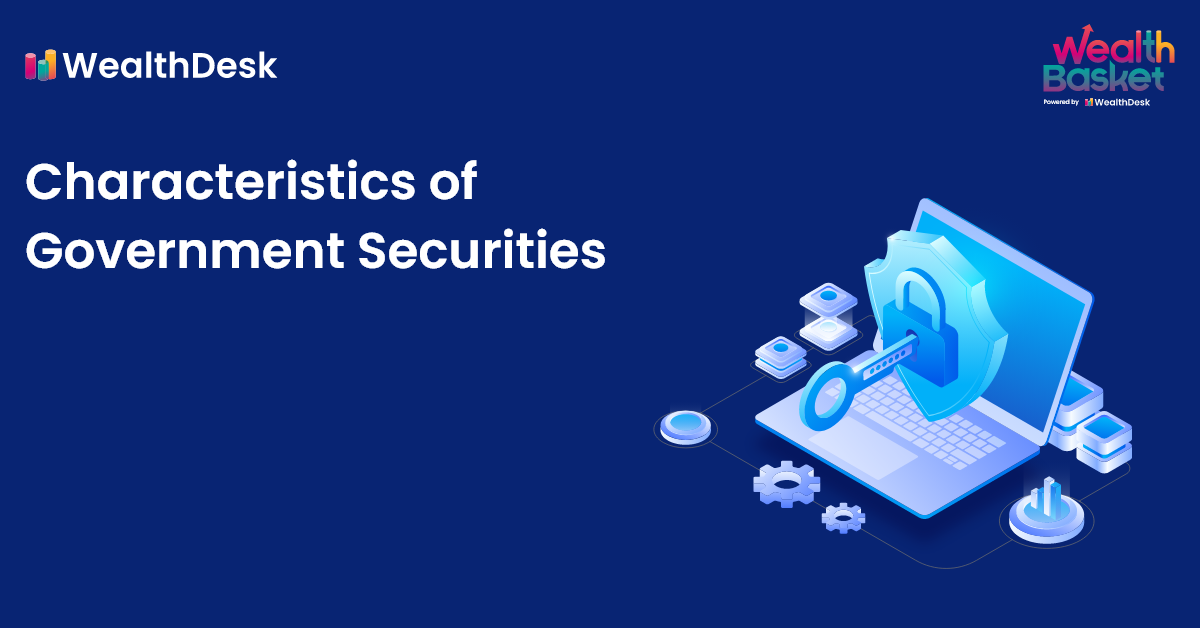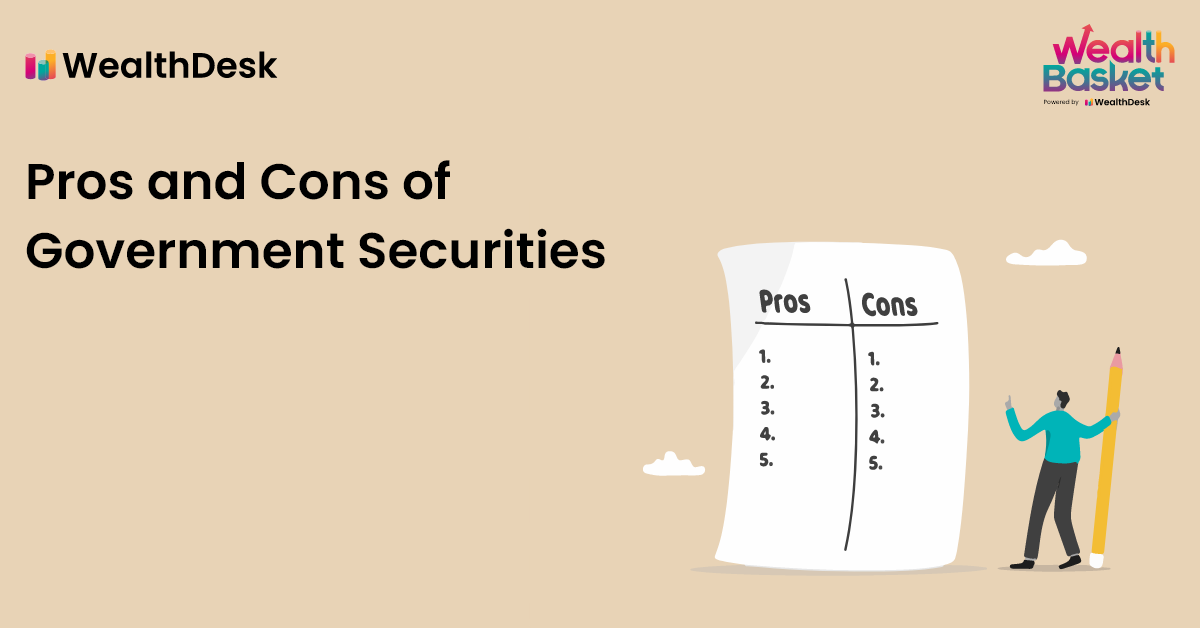If your investment returns are lower than the inflation rate, the real value of your investments would have decreased. This comes as a nasty surprise for investors unaware of the effects of inflation. Uninformed investors will not understand whether their investments are keeping up with inflation or not. For this reason, it is important to learn how to calculate real returns.
Additionally, one must also be aware of the options they have, in order to protect their investments against inflation. An investor should know about the inflation-proof investment options they can turn to. In this article, we discuss one such tool: inflation-indexed government bonds. We discuss investing in an inflationary environment, key features of government securities and inflation-indexed government securities.
What is inflation?
Inflation is the rise in the general price level, a measure of overall prices at a point in time. When prices rise, the value of money falls. Why? Because the same money will buy fewer goods.
Suppose the price of 1kg wheat increases from ₹10 to ₹15 in the space of 1 year. Here, inflation in wheat prices would be = ₹15-₹10/₹10 = 50%.
If you were buying 10 kgs wheat with ₹100 before the price rise, you would only be able to buy 6.67 kgs after the price increase. So the value of money in terms of wheat has gone down. When we experience inflation, the value of money goes down due to the price rise of overall goods and services.
How does inflation affect investment?
Now that you know how inflation affects the value of money, it is natural to be curious about how inflation affects investing and savings. An asset (stock or other security) may appreciate also because of inflation. In some cases, instead of company growth, growth of all prices may be a more prominent contributor to the rise in stock price.
Real Returns
This would be an appropriate point to learn about ‘real return’.
The formula for the real rate of returns:
A widely used approximation of this formula is,
Real rate of return = Investment Rate of return – Inflation rate
If inflation is greater than the returns on an investment, the value of the investment has actually gone down. Hence, the real returns would be negative.
If inflation is equal to the returns on an investment, the value of the investment has remained stable. Hence, the real returns would be zero.
If inflation was less than investment returns, the value of the investment has increased. Hence, the real returns would be positive.
Thus, it is apparent that an investor would want returns above the inflation rate. After all, you don’t invest to lose money. At the very least, you’d aim to protect your savings from inflation.
Why are bank savings insufficient for retirement?
Bank rates have been kept low since the COVID-19 pandemic to spur growth in India. As India’s economy rebounds, the inflation rates have also increased. This is only natural as growth is accompanied by a price rise.
If the interest rates are held low, more people take loans, fewer people want to hold savings, and ultimately everyone has more money in their hand to spend. This increase in spending ability spurs inflation.
Thus, low-interest rates affect the value of savings in 2 ways:
- Direct effect: Low appreciation of savings
- Indirect effect: Inflation eats away the value created
Thus, the lower the interest rates, the more difficult it becomes to save for retirement. When you retire, if your savings cannot buy you the same amount of goods as they did in your heyday, just saving into a bank account would turn out to be a lousy retirement plan.
Due to the phenomenon we discussed, we can’t rely on bank interest rates for protecting our savings from inflation.
Additionally, it is crucial to earn inflation-beating returns for those who want to retire early. These returns are difficult to achieve by saving where returns are low.
We have covered how inflation affects savings, investment returns and retirement plans in greater detail in this blog.
What are government securities?
When you invest in government securities (G-Sec), you lend money to the government. The government pays you an interest in the form of periodic coupon payments (except in case of treasury/zero coupon bonds). The government securities come with a sovereign guarantee. The investor will not lose out on the principal amount if the investor waits till the maturity date.
They come for various periods ranging from 14-days to 40 years.
Suppose an investor wants to pull out the money before the maturity date or invest after the issuing date. In that case, they can do so on government securities’ secondary market.
Key Features
- Safe investments that come with a sovereign guarantee
- Regular income through coupon payments
- Wide range of maturity (14-days to 40 years)
- Can be bought and sold easily in secondary markets
- Retail investors can now buy G-Secs through Retail Direct Scheme
Inflation-Indexed G-Secs
Inflation-indexed bonds (IIBs) are government securities that provide inflation protection to principal and interest payments. Buying these bonds allows an investor to protect their returns and their initial investment amount from inflation.
Typically, a bond would repay the principal at maturity and pay the interest periodically (coupon payments). There is no accounting for inflation in this method.
However, in the case of IIBs, the principal amount appreciates according to the inflation rate. The inflation component of the interest payments would be paid along with the principal amount on maturity.
IIBs assure that the principal would be protected against inflation and are guaranteed the true value of their returns. In addition, since the interest payments are received at regular intervals, an investor can plan and choose to reinvest the amount through IIBs or any other asset.
The Takeaway
Inflation-indexed bonds (IIBs) are an excellent tool for protecting a portion of your portfolio and earning stable real returns.
Suppose an investor desires high returns but also wants to minimise the risk. In that case, they can do so by dedicating a portion of their portfolio to IIBs. IIBs would give stable inflation-beating returns, while the rest of the portfolio would aim for high returns.
Thus, we see that government securities give investors a lot of flexibility in designing their portfolios.
We hope you found this article helpful. Bookmark WealthDesk blog that makes finance easier to understand.
At WealthDesk, you can find portfolios called WealthBaskets curated and managed by some of the finest SEBI registered advisors. All you need is a Demat account with one of our partner brokers. All the assets in a WealthBasket would be present on the subscriber’s Demat account, giving them greater control and receiving dividends directly.
FAQs
Indexing for inflation means adjusting prices, incomes or any value based on an indicator of inflation. This is done to understand the true value by excluding the effects of inflation on said commodity or investment.
Interest payments of bonds that are not indexed for inflation will decline in real value due to inflation. During periods of comparatively higher inflation, investors feel the interest payments of a non-indexed bond would not keep up with inflation. This drop in demand leads to falls in the prices of the bonds on the secondary market. However, bonds indexed for inflation will not experience these drops in value as the interest payments will appreciate along with inflation.
Growth is required to accommodate the rising population and the wants of higher living standards. This results in inflation. Spikes in inflation would occur when one of the factors driving growth becomes scarce. For example, inflation will spike when production cannot keep up with population growth and rising standard of living demands. Another cause of inflation is the drops in the supply of vital raw materials like oil, food grains, etc.


















